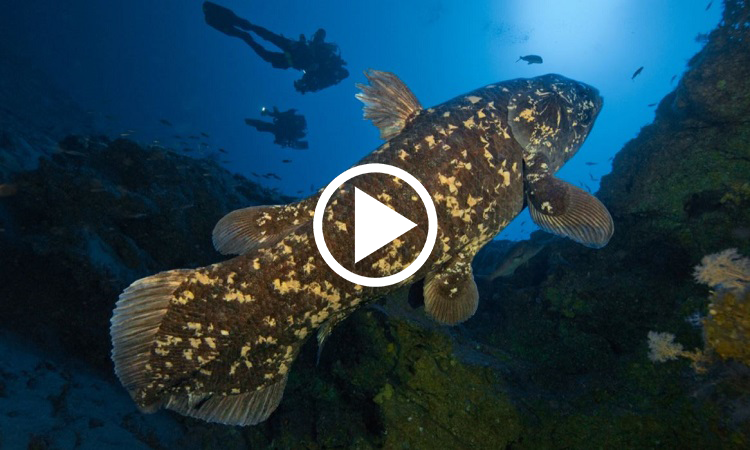Coelacanths that lived at the same time as dinosaurs can live up to a century.
The coelacanth’s lifespan is thought to be around 20 years, but new estimates suggest that it is a fish that lives up to a hundred years, with sharks. French researchers examine scale marks in museum specimens, such as tree rings that reveal the age of the trees. They suggest that coelacanths do not reproduce until late middle age and can be pregnant for up to 5 years. They published their results in the journal Current Biology.
Coelacanths grow slowly and produce very few young, making them particularly vulnerable to extinction pressures such as climate change and overfishing. Understanding their life cycle can help strengthen conservation and protection measures, explains Dr Bruno Ernande of the University of Montpellier, France.
The coelacanth was thought to be long extinct, until it was discovered in fishing nets off the coast of South Africa in 1938. Two populations were later discovered on the east coast of South Africa. Africa and Sulawesi, Indonesia. . The African population is in the critically endangered category, with only a few hundred individuals remaining.
“Coelacanths seem to have the slowest life cycle among marine fish, close to deep-sea sharks,” said scientist Kélig Mahé from the North Sea Fisheries Research Institute in Boulogne-sur-mer. , France. “Our results indicate that they are more threatened than expected due to their unusual life cycle. New information on the biology and life cycle of coelacanths is important for the conservation and management of this species.”
In the future, scientists plan to conduct further analyzes of coelacanth scales to see if their growth rates are related to temperature. The response will provide a better understanding of the impact of climate change on the coelacanth.
The ancestors of the coelacanth evolved 420 million years ago, surviving the displacement of continents as well as the impact of the meteorite that caused the dinosaurs to disappear. Inhabiting caves at the bottom of the sea, individuals can measure up to 1.8 m in length and weigh over 90 kg.


